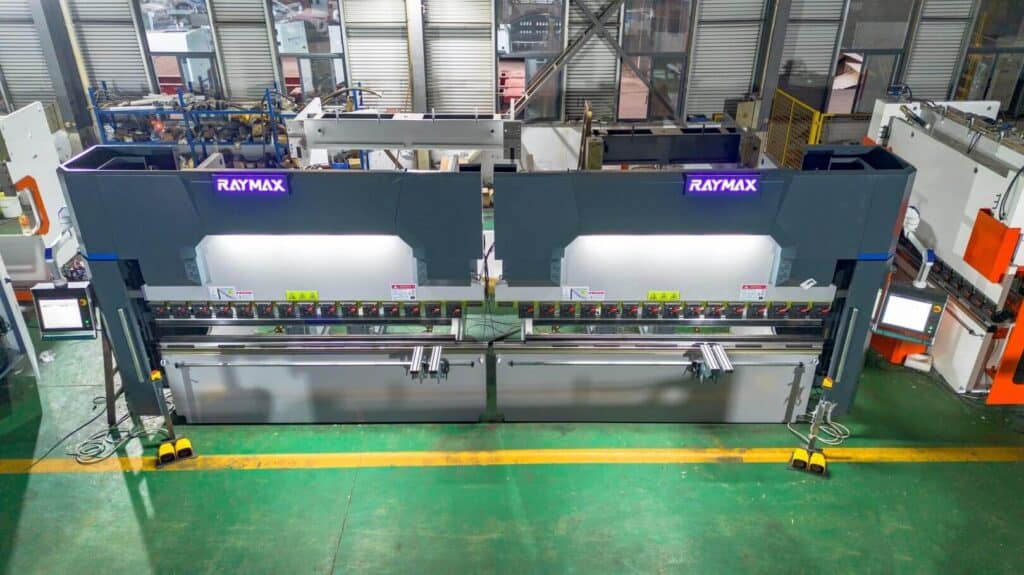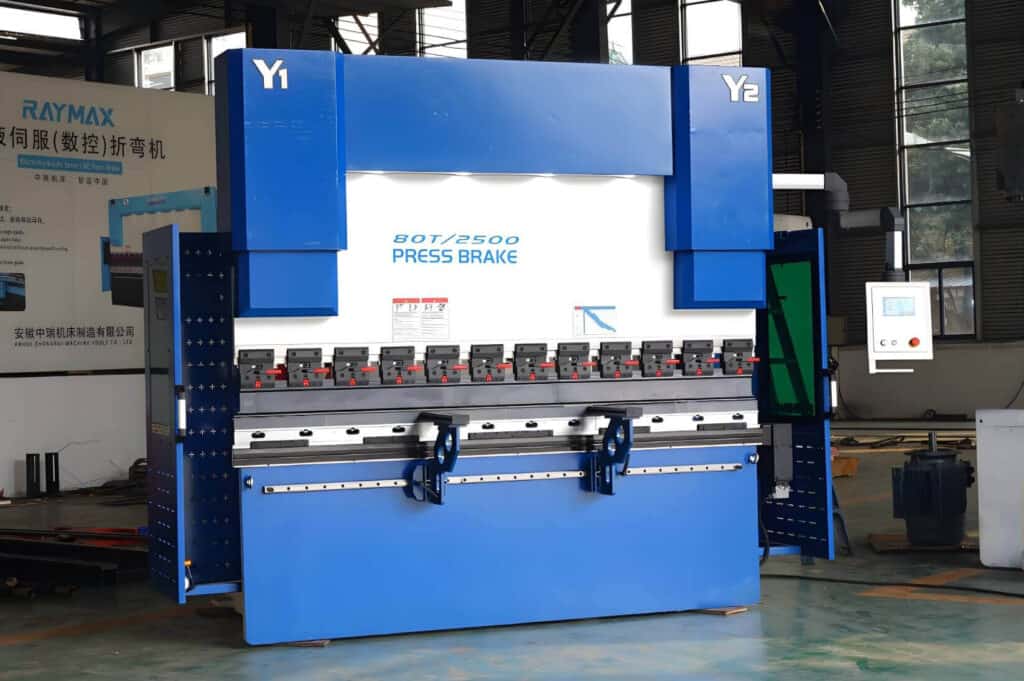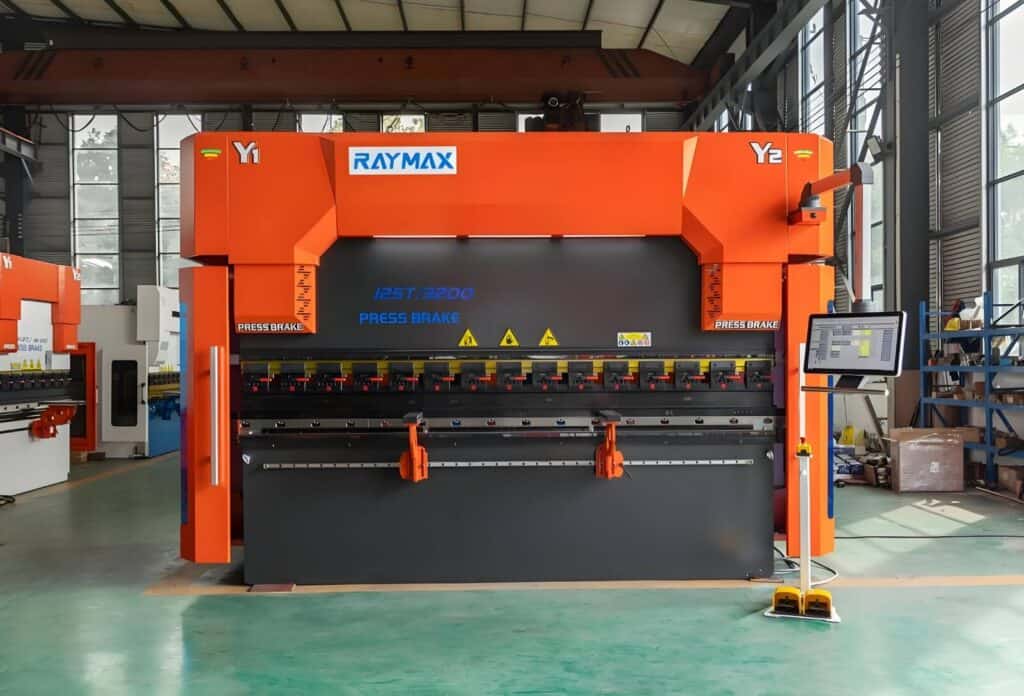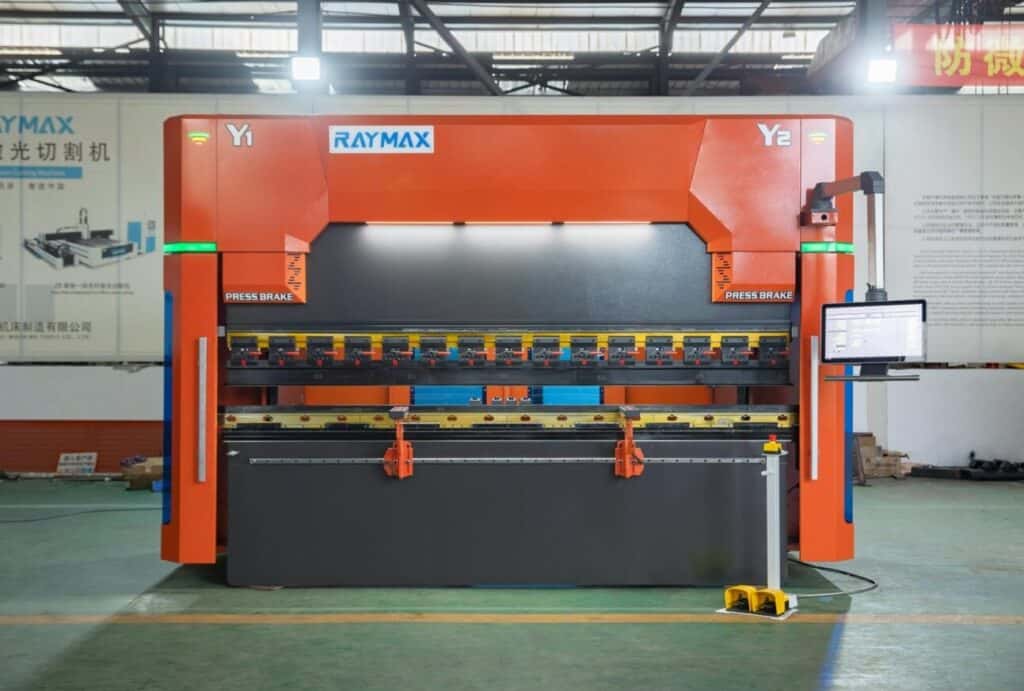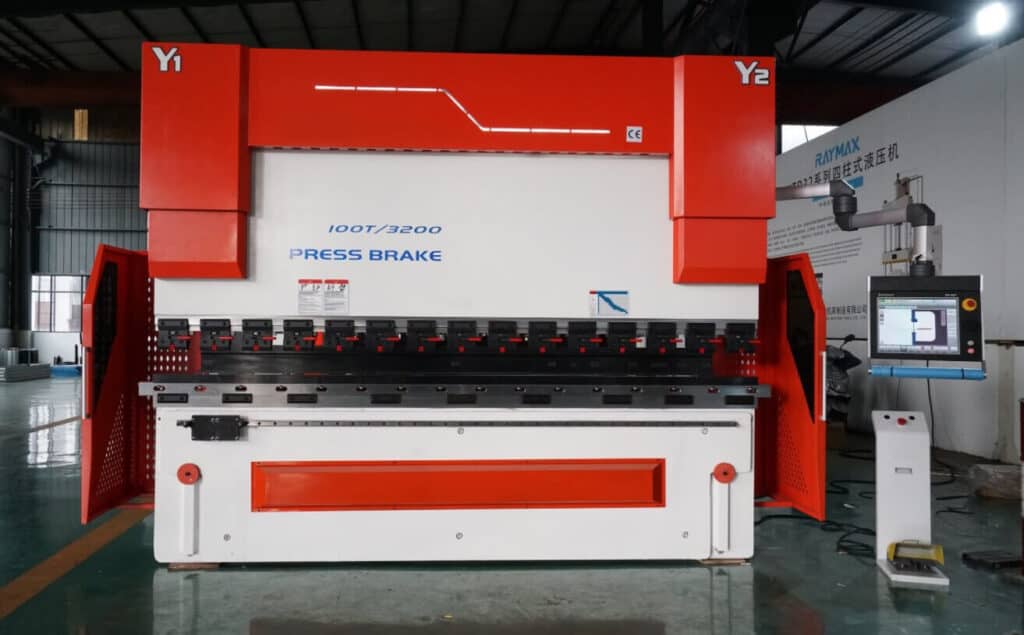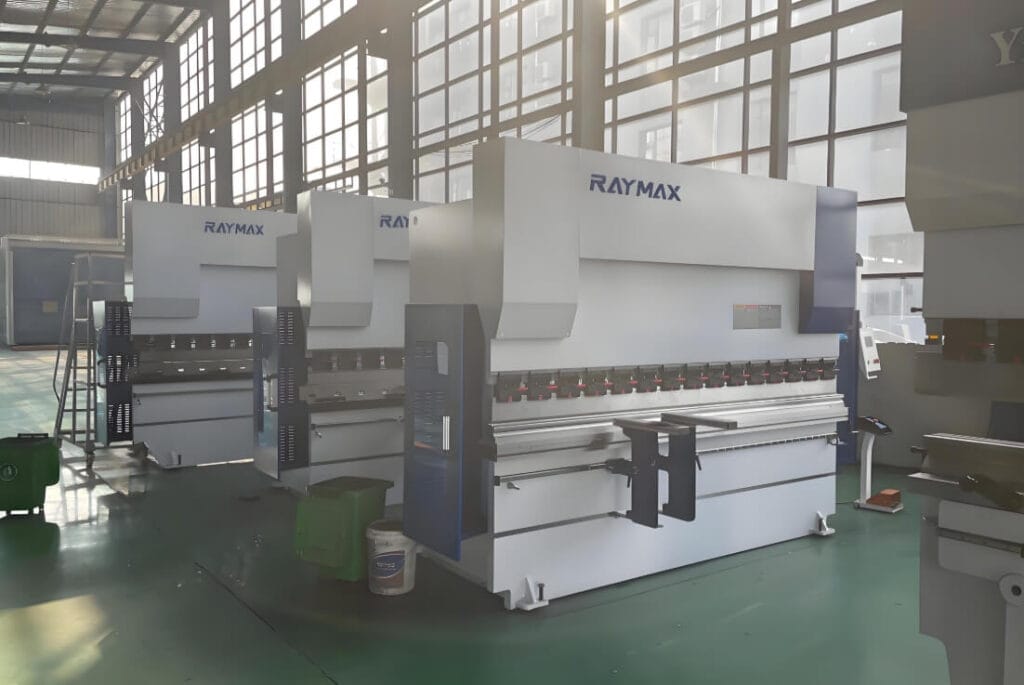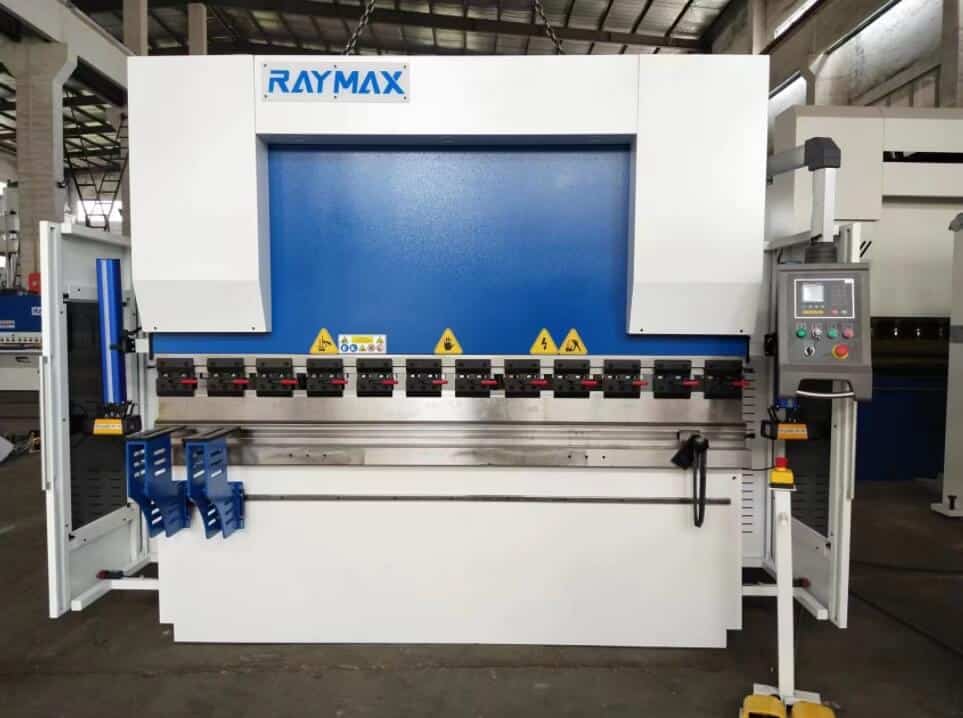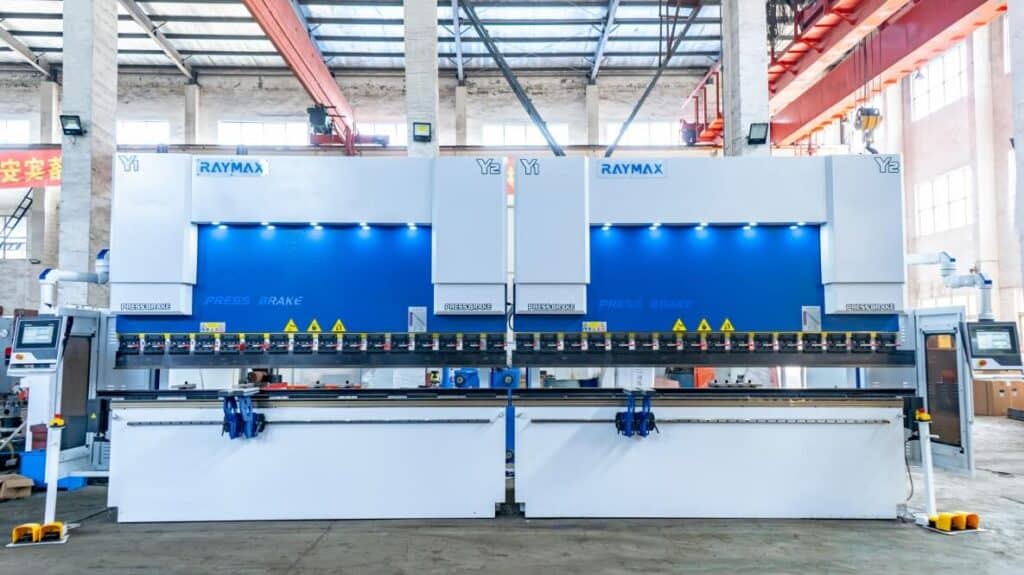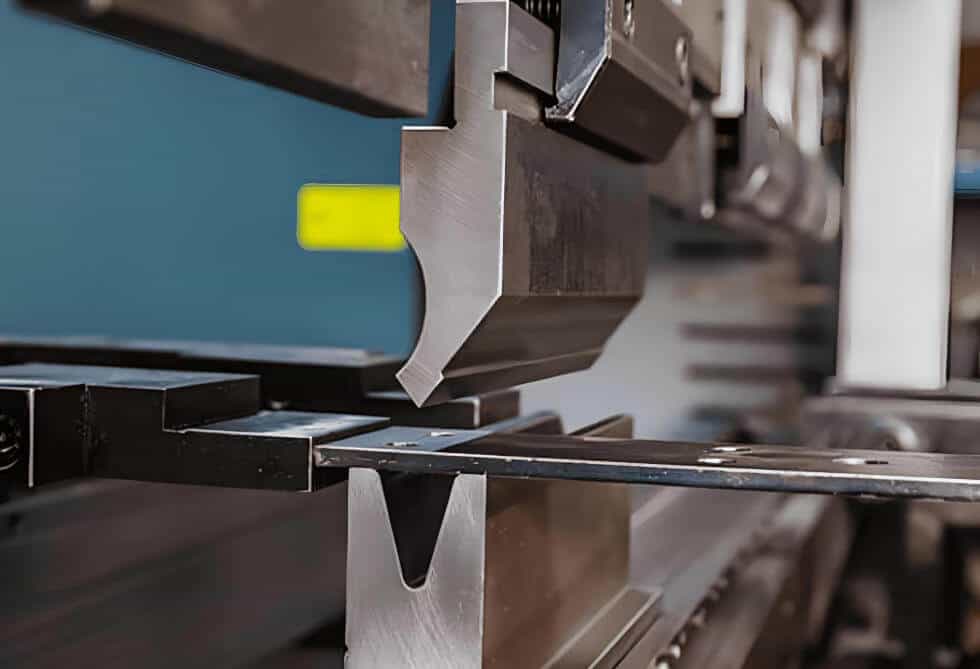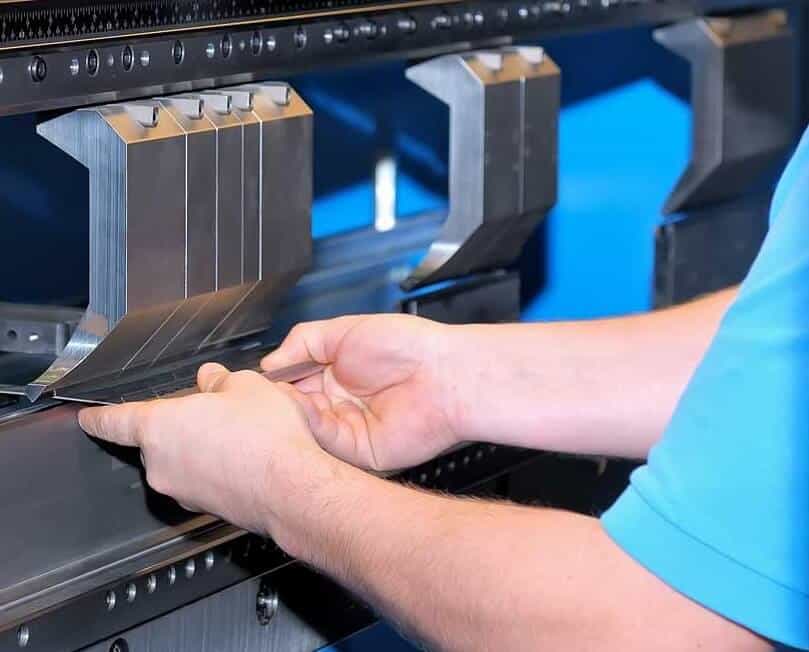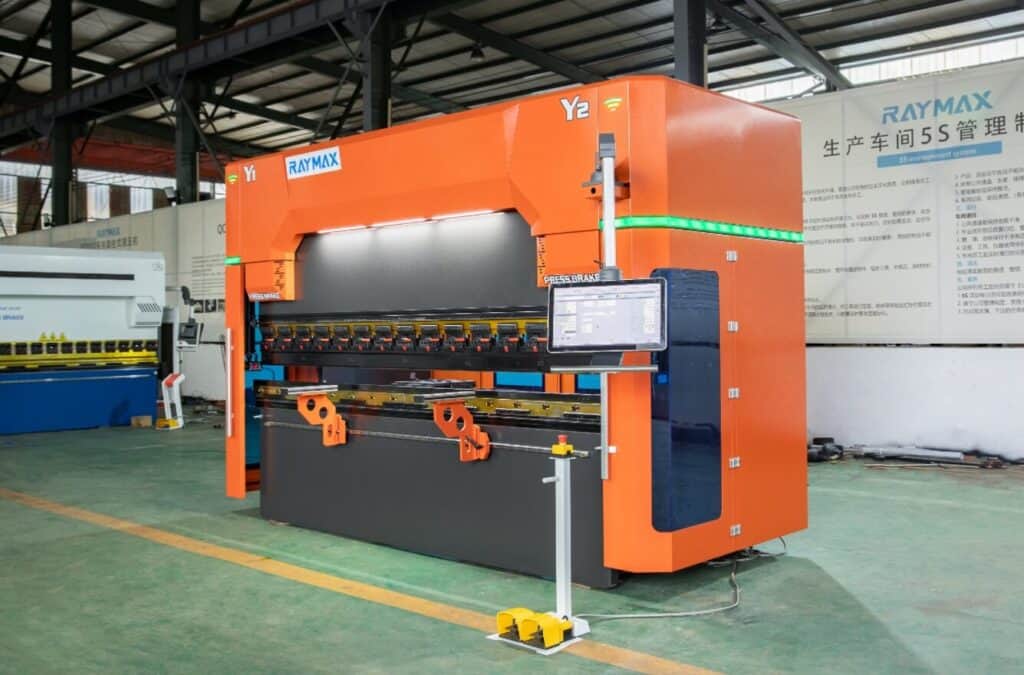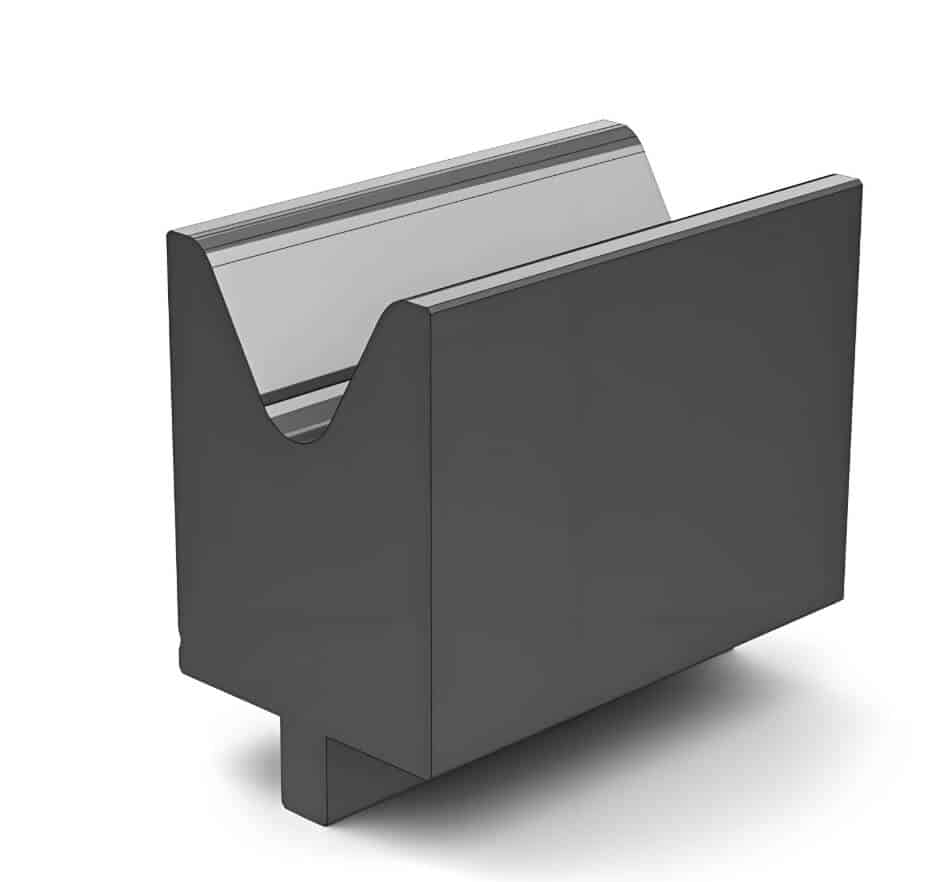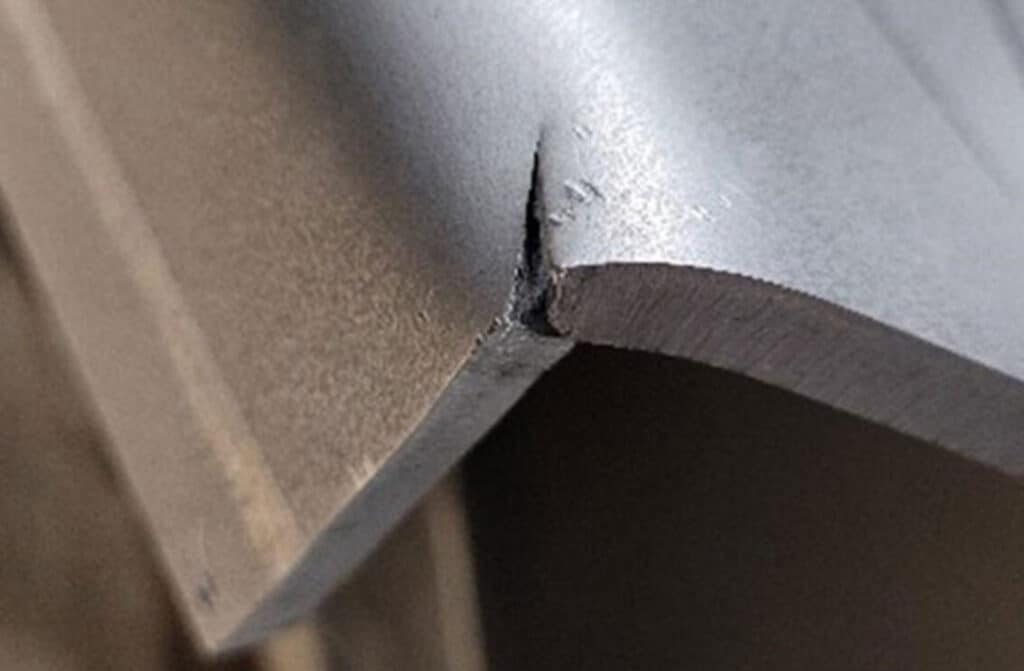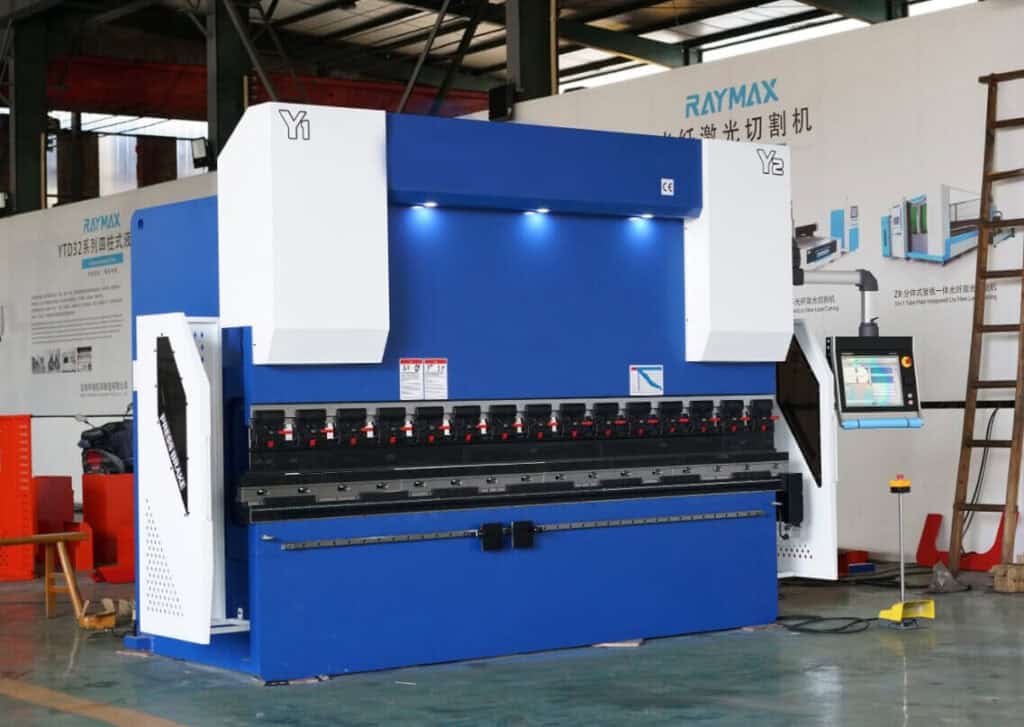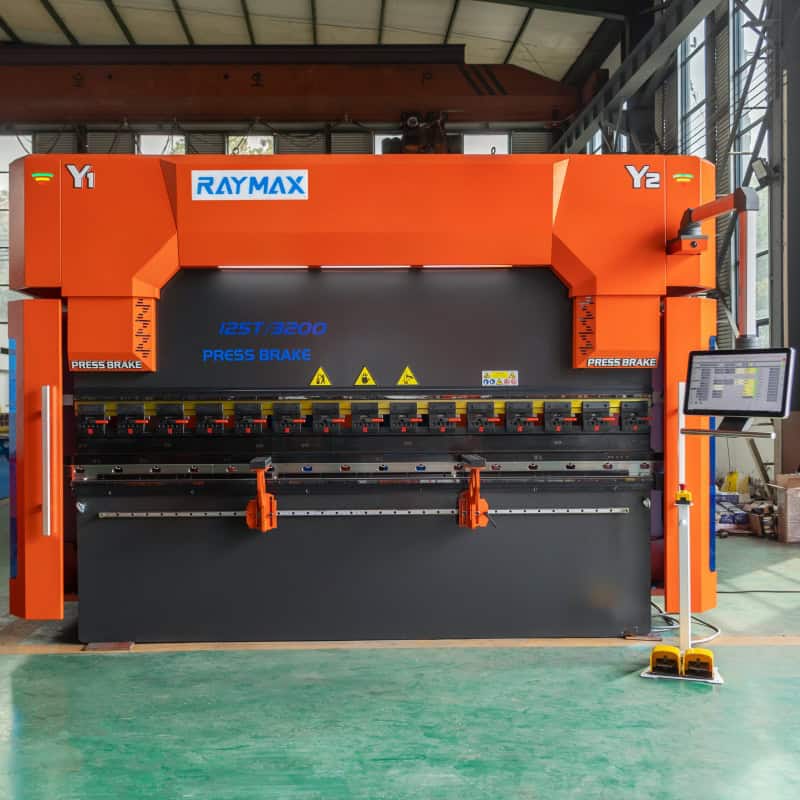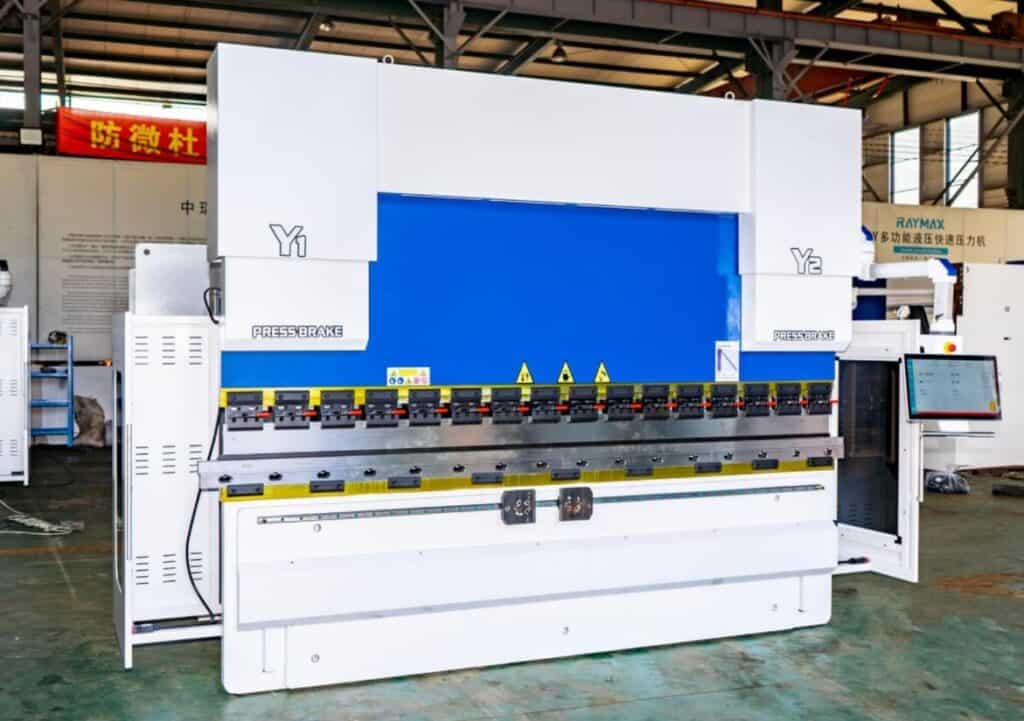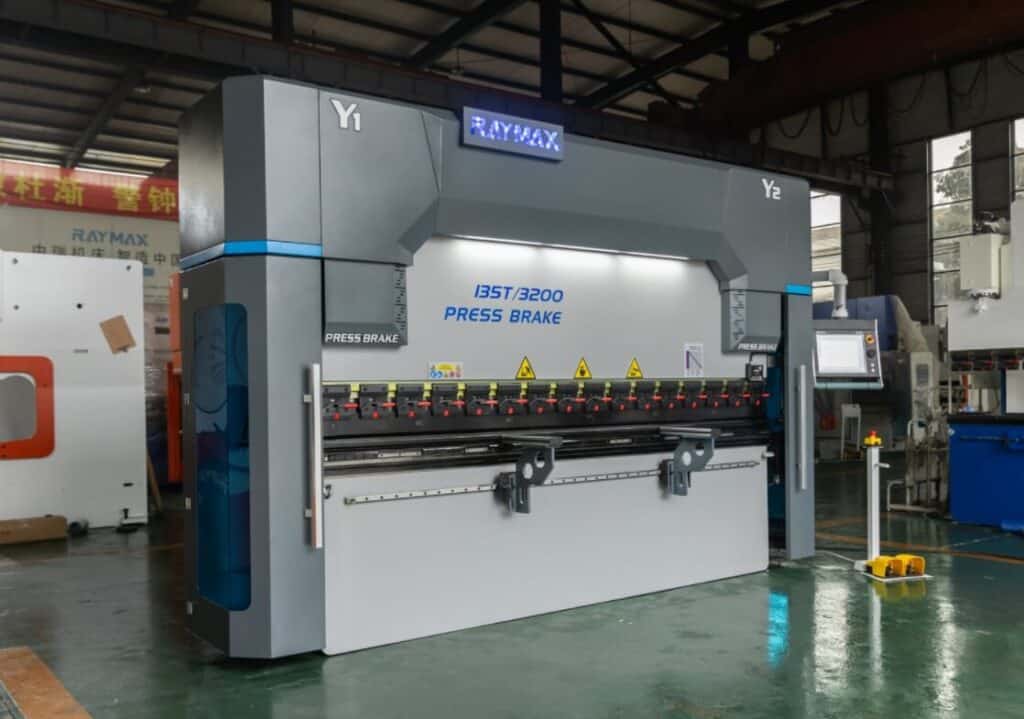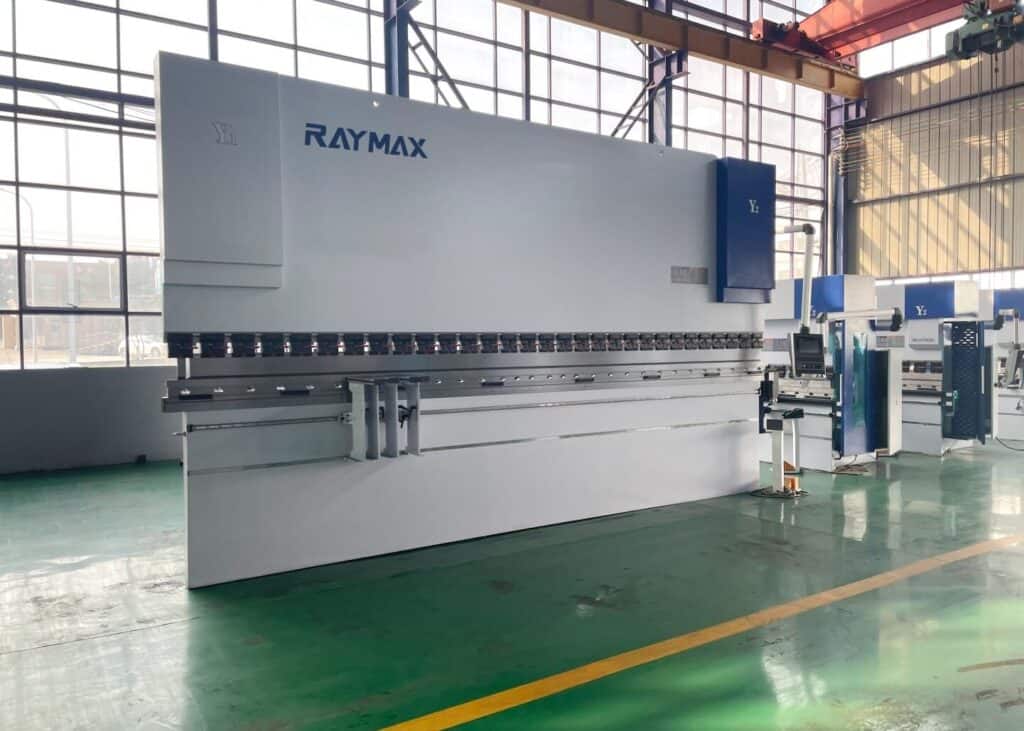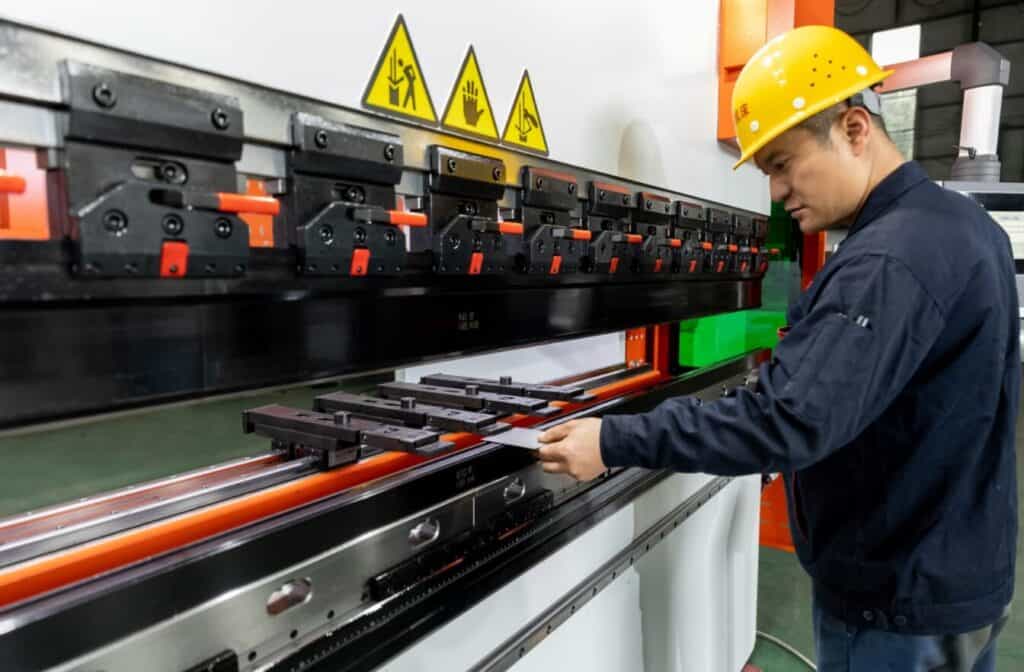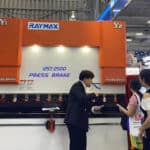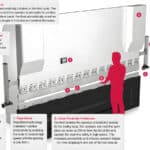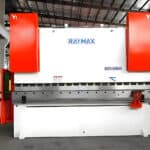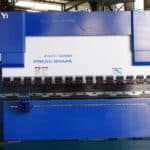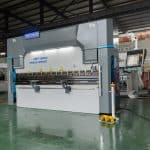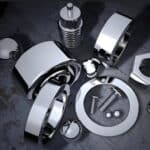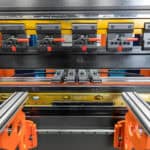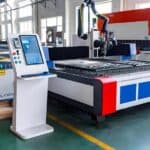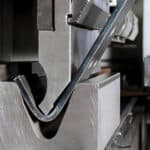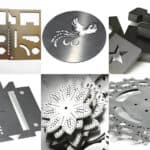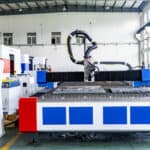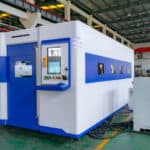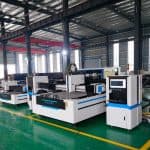1. Introduction
Press brake is a machine tool that uses upper and lower dies to bend and shape sheet metal. It’s primarily used to bend metal sheets into various shapes and angles, making it an indispensable core piece of equipment for modern sheet metal processing companies. The key to a press brake’s performance lies in its ability to achieve high-precision and high-resolution bending operations. Therefore, its performance directly impacts the product’s dimensional accuracy, appearance quality, and structural strength.
With the advancement of industrialization, market demand for processing large and extra-long workpieces is increasing. These workpieces often involve long tubes, profiles, or other complex structures, making a single press brake incapable of handling such large-scale processing tasks. Therefore, the emergence of tandem press brakes has significantly improved processing capabilities, enabling them to simultaneously process longer workpieces, ensuring both efficiency and quality.
This article will comprehensively explain the definition of tandem press brakes, their operating principles, key applications, system advantages, differences compared to conventional press brakes, and purchasing recommendations, to help you gain a clear and comprehensive understanding of this equipment.
2. What is a tandem press brake machine
2.1 Tandem press brake definition
The tandem press brake machine is a machine that is composed of two press brakes of the same model, which realizes cooperative processing under the electrical and hydraulic systems to complete the processing of ultra-long, ultra-wide and super-heavy metal sheets, and is famous for its high precision and high efficiency bending.
For more information on tandem press brakes, please refer to: Electro-Hydraulic Tandem Press Brake
For online retail of tandem press brakes, please visit: press brake stock
2.2 The basic difference from ordinary press brakes (single models).
Ordinary brake press: only a single machine is used, mainly used for the conventional bending of small and medium-sized and batch workpieces, the processing length is short, and the processing tonnage range is limited.
Tandem brake press: It has a more complex control system, which can realize the simultaneous operation of two machines. The production flexibility and bending capacity are higher than normal, enabling larger workpieces and more complex bending tasks.

3. How does the hydraulic tandem press brake system work?
3.1 Working principle of hydraulic tandem press brake system
The CNC servo control system highly integrates the main machine, hydraulic and electronic control parts of each brake press and sends the same instructions, ensuring that the indenter on each machine moves to the exact same position at exactly the same speed, and realizes the synchronization of the movement of multiple machines. The position and pressure of each machine are monitored during this process and fine-tuned as needed to ensure that the workpiece is evenly stressed during the process, resulting in consistent, high-quality bends and preventing bending errors and twisting.
3.2 What are the main components of the hydraulic tandem press brake?
A hydraulic tandem press brake is composed of the main CNC numerical control system (conveying instructions), multiple press brakes (the main force application device), backgauge device (automatic plate positioning), mold (bending tool), hydraulic system (providing power and pressure), synchronous control system (core to ensure multi-machine action coordination) and so on.
3.3 Brief description of the operation process of the hydraulic tandem press brake: how to carry out the bending operation
3.3.1 Align the machine: Align all the press brakes to ensure that the distance between each press brake is the same.
3.3.2 Place the workpiece to be processed: load the plate onto the workbench of the brake press, ensure that the plate is placed in the specified position and pay attention to the stability of the material on the workbench.
3.3.3 Connect and operate the control system: program and input the process parameters such as size, bending sequence, pressure, angle and so on into the CNC control system.
3.3.4 Start bending: enable the synchronous coordination system, so that the two press brakes can perform bending operations at the same time, waiting for the end of the tandem press brake. Pressure and position are detected and fine-tuned at all times during the process.
3.3.5 Unloading the finished product: check whether its accuracy is up to standard, and carefully remove the processed finished product from the workbench.
4. The main application of hydraulic tandem press brake
4.1 Machining capacity for long metal parts (e.g. 60 feet long parts)
Based on the strong processing ability of long metals, it is often used in construction, bridges, ships and other fields. For example, the processing of subway cars, wind power towers, bridge guardrails, container boards, large mechanical shells, etc.
4.2 Application in the bending of heavy and complex components
For large-thickness, high-strength and multi-dimensional complex structural parts such as shipbuilding decks and rail vehicle chassis, the tandem press brake machine can be combined with synchronous large tonnage to achieve high-precision and high-quality processing of thick plate materials, and can flexibly bend multi-curved structures according to the segmentation process.
4.3 Flexibility of tandem press brake machine: independent operation and linkage operation
Independent mode: each brake press is operated separately and manufactured separately, with high efficiency, which can meet the ordinary processing tasks of conventional small and medium-sized parts.
Collaborative mode: Multiple machines work together to manufacture materials, which can achieve high-quality and high-precision processing of materials.
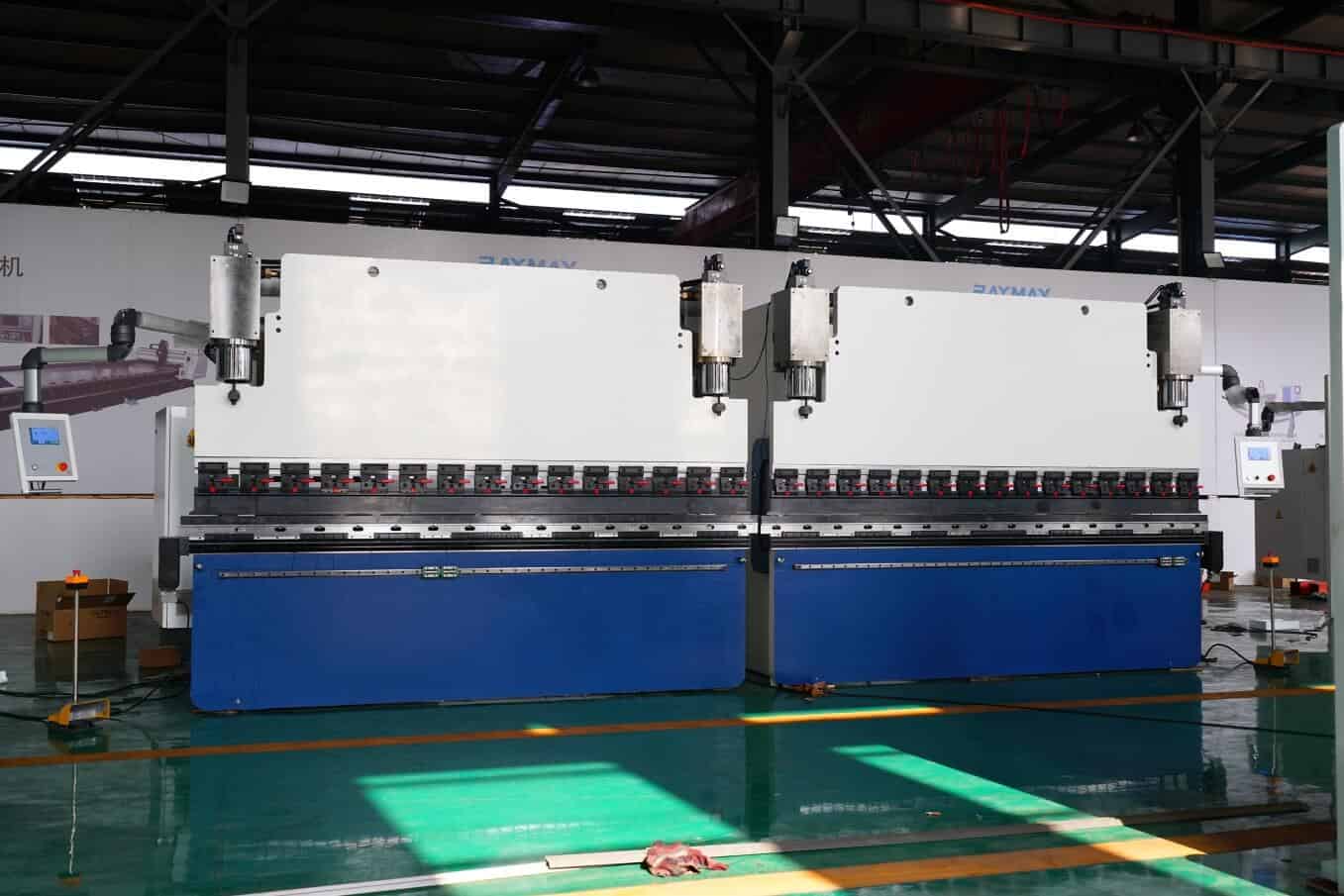
5. The main factors affecting the bending quality
5.1 Extended bending capacity (suitable for processing extra-long parts)
The combination of multiple press brakes can break through the limit of single machine length and tonnage, and complete ultra-long workpieces that cannot be processed by a single machine, so as to meet the needs of different projects.
5.2 Complex structural parts
Multiple machines work together to process each other, complement each other’s advantages, and can realize special-shaped, combined curved surfaces and multi-station bending, produce some special and complex parts, and adapt to a variety of industrial applications.
5.3 Increase tonnage capacity
Multiple press brakes work together to synchronize their output, stack their tonnage on top of each other, increase their capacity, and process high-thickness, high-strength materials, increasing the versatility and flexibility of production.
5.4 Uniform bending quality
Simultaneous operation of the two machines eliminates uneven deformation in length, angle and direction, ensures consistency of the finished product, and reduces mass fluctuations caused by uncoordinated machine movements.
5.5 Strong production flexibility
It can be used independently to process small parts or combined to process large workpieces.
5.6 Switchable individual/collaborative mode
Small batches of small parts can be completed in stand-alone mode, and larger workpieces can be completed in combination in collaborative mode. Different production modes have different advantages and are suitable for a variety of work tasks.
6. Comparison between tandem press brake and standard brake press
6.1 Applicable workpiece length
The standard brake press has a small processing length, generally within 4 m, while the tandem press brake machine combined with multiple press brakes can reach more than 10 meters.
6.2 Control Methods
Since the standard brake press is a single machine, it is controlled independently by a single machine. The tandem brake press adopts CNC multi-machine synchronous collaborative control.
6.3 Precision control
The standard press brake is controlled by a single system, and the accuracy is average, and sometimes the error will be large. The tandem press brake adopts a high-precision synchronous control system, and the general error is less than 0.01mm.
6.4 Cost
Standard press brakes have a low equipment investment due to the fact that they only have a single machine. The tandem brake press is not only the superposition of multiple machines, but also a high-precision and high-quality instrument, the investment is relatively high, but the cost performance is high.
6.5 tonnage capacity
The standard press brake has a fixed maximum force, generally with a maximum limit of 200-400 tons, and the tonnage capacity is small. The tonnage capacity of the tandem press brake is the result of the addition of the tonnage of multiple machines, which can reach thousands of tons.
6.6 Multitasking ability
Standard press brakes can only focus on a single job and cannot be manufactured at the same time. Tandem press brakes can not only be manufactured collaboratively, but also independently if necessary, improving production efficiency.
6.7 Scope of Application
Conventional sheet metal processing is generally suitable for standard press brakes, while tandem press brakes are suitable for large, ultra-long, and thick plate processing.
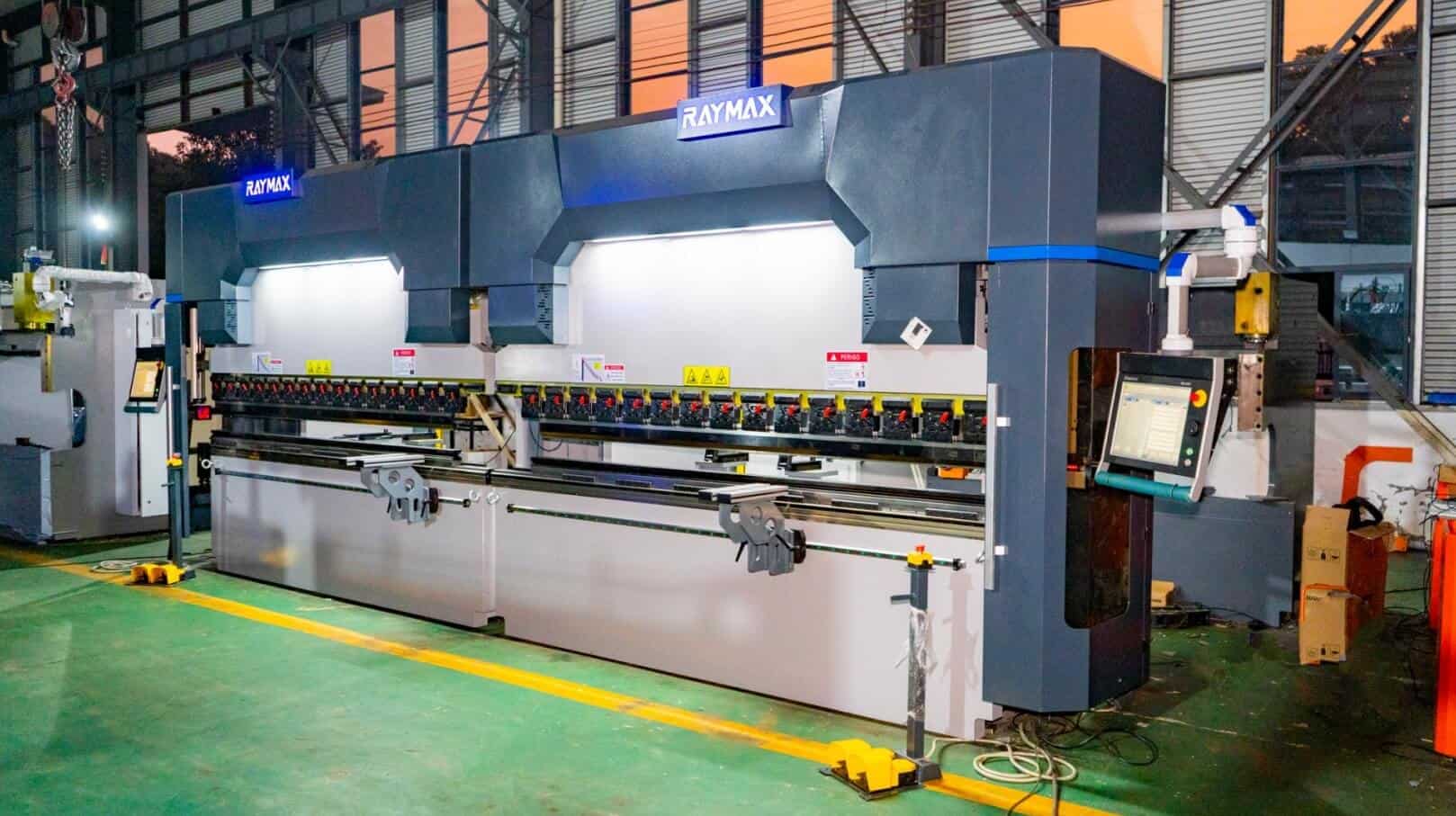
7. How to choose a hydraulic tandem press brake for your business
7.1 When should you consider a hydraulic tandem press brake machine solution?
When the production requirements exceed the capacity of standard press brake equipment, that is, the processing of long workpieces and heavy and thick materials, the production of complex parts or structures, or the pursuit of automation and intelligent processing, enterprises should consider tandem press brakes.
7.2 Considerations when purchasing
7.2.1 Load capacity
It refers to the maximum load that the equipment can withstand the processing requirements, the stronger its capacity, the greater the weight of the material that can be processed, and the longer the application time.
7.2.2 Control system
hydraulic tandem press brakes are famous for their intelligent characteristics, and choosing a multi-machine collaborative intelligent control system that supports servo drive and high-speed CNC bus can improve work efficiency.
7.2.3 Length
Consider the maximum length of the workpiece to ensure that the machine can process normally. Purchased in the largest size on this basis.
7.2.4 tonnage
Generally, it is calculated according to the maximum workpiece thickness and material. Pay attention to give enough safety margin to avoid overloading.
7.2.5 Material thickness
For steel, stainless steel, aluminum alloy and other materials, the thickness of different materials has a greater or lesser impact on the whole device.
7.2.6 Manufacturers
It is recommended to give preference to well-known brands at home and abroad, because such manufacturers are more reputable, the equipment quality is also good, and there is high-quality after-sales service and spare parts supply.
8. Frequently Asked Questions (FAQs).
9. Conclusion
With the upgrading of the manufacturing industry to high-end customized, heavy-duty and ultra-long parts, tandem press brakes have become the preferred solution for many engineering, equipment and heavy industry industries with their strong processing capacity, flexible production mode, excellent synchronization accuracy, and high automation level to adapt to future intelligent manufacturing.
The above is the editor’s detailed introduction of the tandem press brake today. For more knowledge about press brakes and fiber laser cutting machines, you can follow our blog updates. As a manufacturer of fiber laser cutting machines and press brakes, RAYMAX is committed to providing more, more professional, and more comprehensive CNC machinery knowledge to friends in the metal processing industry while expanding the company’s influence. If you have any unresolved related questions or are interested in purchasing related machines, please feel free to contact us. RAYMAX provides 7*24 hours of free technical support service! Looking forward to your letter.
Further Reading
Press Brake Bending Basics: Everything You Need to Know for Efficient Bending
Ultimate Guide to Press Brake Punches: Eleven Types, Materials, Selection, and Maintenance
The Ultimate Guide to Press Brake Metal Thickness
Press Brake Dies Explained: Types, Applications, and golden rule of selection
10 Press Brake Bending Problems and How to Fix Them in Sheet Metal
Definition, working principle and selection guide of hybrid press brake
NC vs CNC Press Brake: Key Differences, Selection Guide, and Industry Applications
Press Brake Radius Mastery: Inside/Outside Radius, 8× Rule, and Real-World Tips
What Is a Sheet Metal Press Brake Machine? Working Principles, Bending Techniques & Buying Guide
One Article to Master CNC Press Brakes: Types, Workflow, Structure & Buying Tips
The Ultimate Guide to Fiber Laser Cutting Machine Working Principles, Components, Workflow and Process Parameters
How to Use a Press Brake Machine for Precise Bending: Essential Settings, Tools & Tuning
Post Your Review
Share Your Thoughts And Feelings With Others
Hello, Customers!

Author introduction
My name is Francis Pan, and I am the foreign trade manager of RAYMAX. I have been engaged in the fields of metal manufacturing and CNC machinery for over 10 years. Welcome to visit our official website, I am more than happy to provide you with the best service and products.
Email: [email protected] | Wechat: 13645551070
Top Guidelines
- What is an 8 axis press brake: Why It’s the best investment for complex bends
- Press Brake Guarding Systems & Requirements: OSHA‑Compliant Injury Prevention Guide
- What Is a 3 Axis Press Brake? Complete Guide to Structure, Benefits & Selection
- What is a 4 Axis Press Brake? Configuration, Advantages and Uses analysis
- What is a 6 Axis Press Brake? Working Principles, Advantages, Applications, and Buying Guide
- What Is a Press Brake Used For? 16 Industry Applications and 8 Types of Bends
- Press Brake Sheet Follower: Smart Support for Long, Thick, Thin Sheets
- Fiber Laser Cutting Machine Process
- Press Brake Air Bending: Guide to Principles, Calculations & Best Practices
- What Materials Can a Fiber Laser Cut? A Practical Handbook of Metals, Non-Metals & Limitations
- What is a Fiber Laser Cutting Machine? The Ultimate Guide for 2025
- What is Laser Cutting Machine? The Ultimate Guide for 2025
- Top 10 Fiber Laser Cutting Machine Manufacturers of 2025
- Press Brake Buyers Guide: Expert Tips to Select, Compare, and Buy with Confidence
- Hydraulic Press Brake Troubleshooting: The Ultimate Guide to Fix Common Problems

